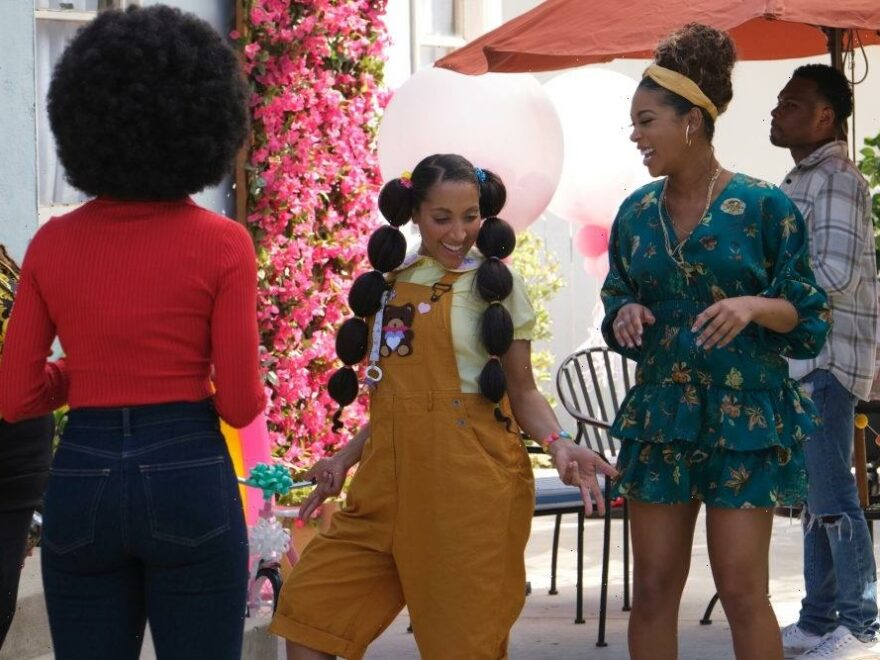“A Black Lady Sketch Show,” created by Robin Thede with fellow actors Gabrielle Dennis, Ashley Nicole Black and Skye Townsend is certainly an improvisational, production-heavy, comic masterpiece. But who knew that it was in the business of making history?
Last year for Season 2, editor Stephanie Filo made history as part of the first-ever, all women-of-color editing team to win an Emmy. Now, in 2022, for its third season, the editing team of “A Black Lady Sketch Show” — Filo, Taylor Mason, Bradinn French, Robyn Wilson — are the first all-Black editing team to be nominated for an Emmy.
Of this achievement, each editor is proud.
“For all of us, what’s important is representation,” says Filo. “’Black Lady Sketch Show’ proves what it means when you prioritize inclusion. Robin is efficient at finding diverse teams behind, and before, the camera.”
French, who worked with Filo in the editing room for Lifetime’s “Surviving R Kelly,” adds that, “It’s not weird for an entire room of editors to be all-white, particularly men,” he says. “Up until now, it’s been weird to be in an editing room with more than one Black editor. Editing rooms beyond ours don’t usually look like this.”
Four editors sharing experiences like these is why the language of improvisational humor that is “A Black Lady Sketch Show” – with its weekly wealth of varying sets, locations, character throughlines and Easter eggs involved – is cut lovingly, with an ensemble’s musical flow and the precision of a team of surgeons.
Take the Season 3 episode, “What Up, I’m Three,” one where Thede plays a baby-but-not-a-baby with very adult habits — like smoking — that remain unnoticed to the mother. “That is not a baby, that is a voter,” goes one of its punchlines.
The editing — executed by Filo — had to be both razor sharp, but loose with its improvisational flow.
“I do think that this sketch is particularly like that of an ensemble, a band,” says Mason. “It was situational, character-driven and Stephanie did an amazing job in editing, balancing the comedy while maximizing its musicality and tracking the characters’ improvisations. Stephanie made it sound like one band.”
French piggybacks on that comment by adding that, in post, the editing worked to make Black and Townsend react to Thede’s single line. “It was harmonious.”
“After the table readings before the beginning of each season, we have Google Docs tone meetings, a living breathing document where reference points to movies, books or other media are discussed and what specifics that Robin needs,” says Filo. “Robin had been thinking of this sketch for a while, and referenced this film ‘Orphan’ about a young girl who gets adopted, but it turns out she’s not so young — she’s a maniacal adult who kills people. The Kaiser Soze reveal in ‘The Usual Suspects,’ too.”
Taylor Mason chimes in how Thede was originally inspired to create “What Up, I’m Three” based on “an actual news story in the U.K. where a couple adopted a child so much older than they were told,” she says. “It started really dark.”
The one thing that Filo — the principal editor for this episode — and her team had to consider was the mantra-like repetition of its title in the editing suite. “Not every show could do that,” notes French of the hypnotic phrase that had to land in exactly the right place. “How Robin would navigate that beyond just repetition, but rather, blooming into something comic was really unique.”
“We heightened its use to include even more times,” says Wilson. “We wanted to see how often we could say ‘What Up, I’m Three,’ before it became ridiculous. What is the balance between that, and the rest of the improvisation.”
Filo talks about the comedy of this sketch, and the whole of “A Black Lady Sketch Show” being fast-paced with a “joke-upon-a-joke-upon-a-joke until you wind up on the ‘What Up, I’m Three’ punchline,” she says. “You edit to that, and building up to crescendo moments…and adding in improv that make us laugh a lot.”
Read More About:
Source: Read Full Article
